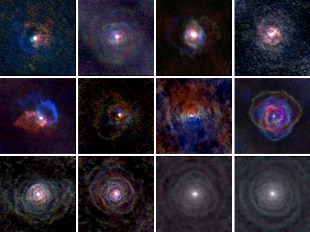Share
17 September 2020Captured the wind of a dying star with a never-before-seen detail: its shape is similar to that of a butterfly and shows what the future of the Sun could be like.
The result, published in the journal Science, is due to researchers coordinated by Leen Decin, of the Catholic University of Leuven (KU Leuven) in Belgium.
Stars like the Sun, when they reach the final stages of their evolution, eject their layers of gas, swelling up to become red giants.
In this process they produce stellar winds, i.e. streams of particles that cause stars to lose mass.
Because they lacked detailed observations, astronomers always thought these winds were spherical, like the stars they surround.
Observing stellar winds around aging stars with the Alma (Atacama Large Millimeter / submillimeter Array) radio telescope in Chile, astronomers were surprised.
"We have noticed that these winds are far from symmetrical," says Decin.
Some of them, he adds, are actually quite similar in shape to planetary nebulae, that is, the envelope of gas that surrounds the remains of stars such as the Sun. The winds observed by the researchers had different shapes: some looked like butterfly wings, others had the shape of a disk, others of spirals.
This, according to the expert, is a clear indication that the shapes were not created randomly.
The astronomers found that other low-mass stars or even planets in the vicinity of the dying star were generating the different patterns.
"Just like a spoon that mixes a little milk in a cup of coffee can create a spiral pattern, the companion of these dying stars - explains Decin - sucks in the material as it revolves around the star and shapes the stellar wind".

